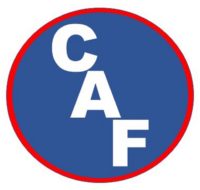Structures and other man-made values are often exposed to nearby fire. That nearby fire might be a fast-moving wildland fire or an adjacent structure fire close enough to the exposure to set the exposure on fire, or at least do some significant heat damage to it.
Exposures – Anything combustible that can potentially ignite based on the current fire conditions – ie. neighboring strutures, structures on a wildland fire, or even heavy neaby wildland fuels. The exposure may be threatened via conduction, convection, radiation and/or fire embers (a form of conduction).
Pre-Treatment – Using Class A Fluid CAF to coat and protect the exposure to decrease or eliminate the chance of ignition and fire spread. The Fluid CAF holds the water in place to cool, wet and simultaneously provide a white reflective blanktet to protect against radiant heat. The white blanket will also extinguish fire embers as they land on the blanket.
Pre-treatment can and should be applied to any ordinary combustible exposure that is threatened. Water will run off the exposure and require a constant application. Fluid CAF will hold to reduce the exposure threat.
Pre-treatment can be applied directly on an exposure as well as on any nearby Ground Cover fuels ahead of a spreading wildland fire.
How much water does it take to protect the exposure? Well, there are too many variables to say exactly, but there are a few considerations:
WATER PROTECTION
- Structures are built to protect against the elements – like rain (water). The structure sheds the water – and the water runs off wetting the ground. Have you ever seen the ground around a building burn?? No, it’s too wet.
- Water will not stick to the exposure since water has high surface tension and has no affinity for carbon-based products. It just runs off.
- Due to #1 above, the water must constantly be applied to keep moisture on the exposure so that the exposure does not absorb too much heat.
- Since water is translucent, it provides little protection against radiant heat. The heat waves will pass through the water and continue to heat up the exposure.
CLASS A FOAM PROTECTION
- Class A Foam does like carbon and will stick.
- On wood structures, the reduced surface tension of the Class A Foam allows it to soak into the wood, keeping the moisture in place for protection.
- The Class A foam blanket holds the water in place providing time for the water to absorb the heat.
- Class A Foam provides a white opaque reflective blanket/barrier to protect against radiant heat.
It can take as little as 30 gallons of water to coat the side of a house with Class A Compressed Air Foam. Once applied, the manpower can be utilized for other tasks, and the additional water that would have been used to protect the exposure can now be used to fight the fire (this is extremely important if the fire is in a non-hydranted are and water supply is dependent on tanker/tender shuttles). Firefighters need only monitor the exposure and occasionally apply and additional coat of foam “if” needed.
HOW TO PROTECT AN EXPOSURE
Basically, the same as with water. Pull a hose and apply the Class A Compressed Air Foam. Time permitting, the strongest coat results from applying a base coat of wet foam, then capping it off with a coat of fluid foam. (Wet & Fluid???)
If time is not available, slap foam on as fast as possible. It’s amazing how much work a little foam can do. JUST DO IT and DO IT QUICK!!!!




The clinging foam blanket created by pre-treating fuels with Fluid CAF both cools and wets the fuel, thus removing the fuel as a readily available combustible.
How long does the Fluid CAF last – See “DRAIN TIME“.
DOES IT WORK??? Oh YES!!!


In the above 2 photos, two barns were used in a CAF training exercise. In the first photo, we see two barns – 3-story on the left, 2-story on the right with less than 2 feet between them. In the 2nd photo, taken from the opposite end of the barns, the 2-story barn has burned to the ground, the 3-story barn is still in tack. The wall on the 3 story barn was coated with fluid CAF. Only small amounts were added during the fire.
After successfully burning down the 2-story barn and saving the other, the 3-story barn was burned to the ground.

If it is threatened, Use CAF to protect it!!







































